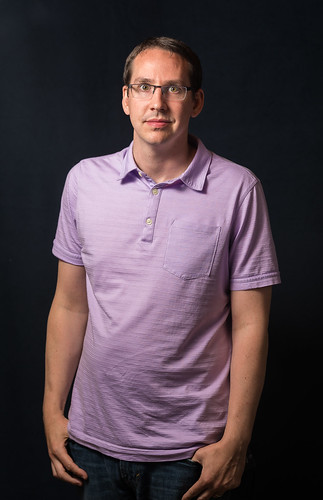constant light is a lot harder to work with; flash is
much easier once you understand it.
getting a black background is realitively easy.
Even using an umbrella (which spreads light all over the place) with a single speedlight, I can keep the background nearly pitch black:

Single Light Selfie by
The Braineack, on Flickr
I was standing a bit too close to the BG and it wasn't really my goal.
this was at f/5.6. The flash was metered to f/5.6 at my face. and since the light falls off quickly, even when spread around through an umbrella, it doesn't light up the background.
you can see in this shot some of the blue background is coming through where it's closer to the light, but towards the far frame it's still black.
again, read up on the inverse square law.
If you need f/13-f/114 to get to black, then your flash is too powerful. If you keep reducing the aperture, then you'll keep increasing the flash power because that has a direct effect on the exposure of the flash.
you need to lower the power of your flash and move it closer to the subject.


![[No title]](/data/xfmg/thumbnail/37/37604-7ad625e983f92f880eb65a264eeef5e4.jpg?1734170732)

![[No title]](/data/xfmg/thumbnail/31/31096-b9b8d52b45753cd4f9251832149ef9da.jpg?1734159254)




![[No title]](/data/xfmg/thumbnail/31/31097-95606cf1bf0ecc862078bc333f20d4f7.jpg?1734159259)



